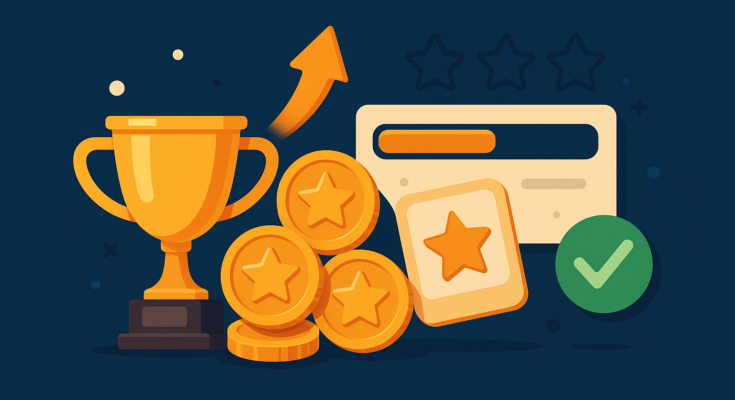In games, rewards aren’t just bonuses — they’re behavior shapers. A well-designed reward system drives retention, monetization, and even virality. But how do you build one that works?
Let’s break it down.
🎯 What Is a Reward System in Games?
A reward system is any mechanic that gives players feedback, gratification, or resources in return for their actions. It fuels the player’s motivation loop — the more rewarding the game feels, the more likely they’ll come back.
🎁 Types of Rewards (With Examples)
1. Immediate Rewards
- Given right after an action
- Examples: Coins, points, sounds, particle effects
- Why it works: Triggers dopamine & encourages instant gratification
🔄 Loop: Action → Reward → Satisfaction → Repeat
2. Progression Rewards
- Given for achieving milestones or completing levels
- Examples: Unlocking new skins, badges, levels
- Why it works: Creates a sense of growth and accomplishment
3. Randomized Rewards
- Loot boxes, mystery chests, gacha pulls
- Why it works: Taps into variable reward psychology (think slot machines)
🧠 Players are more engaged when the outcome is unpredictable but potentially valuable.
4. Daily/Time-Based Rewards
- Examples: Login bonuses, timed chests, cooldown rewards
- Why it works: Drives habitual play and long-term retention
5. Social Rewards
- Rewards for sharing, inviting friends, competing
- Examples: Extra lives for inviting a friend, leaderboard placement
- Why it works: Leverages FOMO and peer validation
🔨 How to Design a Reward System That Works
✅ 1. Align Rewards With Player Motivation
Use Bartle’s Player Types:
- Achievers → Offer XP, levels, rare items
- Explorers → Give access to new zones or secrets
- Socializers → Unlock emojis, chat badges
- Killers → Use ranks, leaderboards
✅ 2. Use a Mix of Predictable + Surprise Rewards
Balance:
- Predictable (complete level → get 100 coins)
- Surprise (random bonus → get 500 coins)
This keeps your game both satisfying and exciting.
✅ 3. Add Layers to Your Reward System
Use multiple loops:
- Core: coins or points for immediate tasks
- Mid: unlock new characters after 5 wins
- Meta: rare skin after 30 days of login
This multi-loop system encourages short- and long-term engagement.
✅ 4. Keep Rewards Meaningful
Don’t reward players with things they don’t care about.
- Currency? → Must be spendable
- Items? → Must improve experience or status
- Cosmetic? → Must feel exclusive or collectible
💡 Tip: Always let players see or preview what rewards are coming up.
✅ 5. Time It Right
- Early game: Frequent small rewards
- Mid game: Start stretching reward intervals (but keep them engaging)
- Late game: Introduce exclusive, prestigious, or monetizable rewards
📈 Why Great Reward Systems Drive Monetization
- Players watch more ads to double rewards
- They spend to get specific unlocks or speed things up
- They return daily, increasing LTV and engagement
🚫 Common Mistakes to Avoid
- Too many rewards = burnout and inflation
- Too few rewards = boredom and churn
- No purpose for rewards = disengagement
- Over-monetized rewards = frustration
🎮 Real Game Examples
| Game | Reward Type | Why It Works |
|---|---|---|
| Clash Royale | Chests (Timed + Random) | Triggers dopamine & habit loops |
| Subway Surfers | Daily login streaks | Builds routine + fear of missing out |
| Genshin Impact | Gacha pulls | Highly addictive due to variability |
| Wordscapes | Coins + streak bonuses | Encourages replay and consistency |
📚 Bonus Resources
✅ Final Thoughts
The best reward systems don’t just feel good — they create habits. They tap into psychology, escalate with progression, and make the player feel like every second spent was worth it.
If your players feel that, they’ll keep coming back.
How to Design Addictive Game Loops: The Secret Sauce Behind Viral Games



